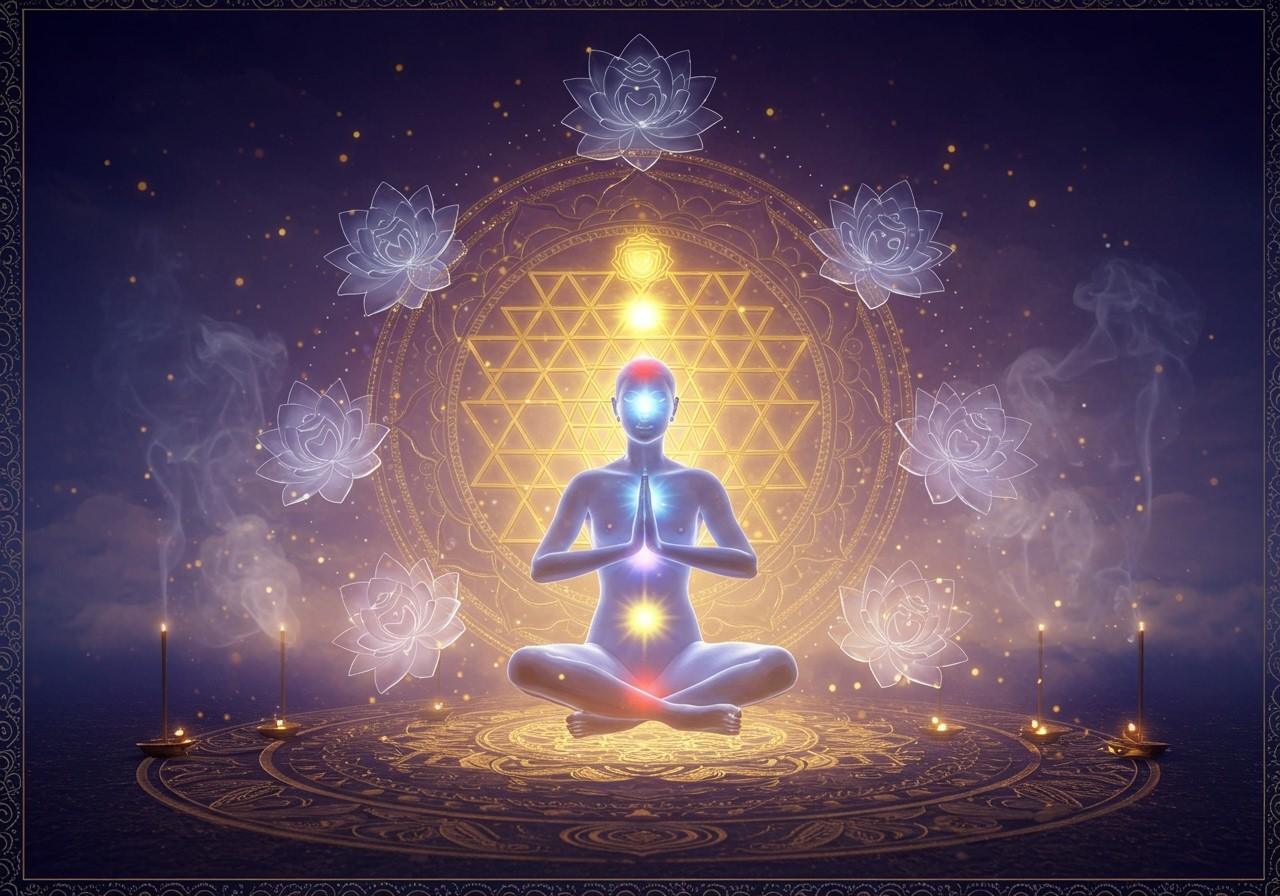Philosophy & Spiritual Concepts have always been central to humanity’s quest for meaning and purpose. While philosophy seeks to understand the nature of existence and reality through reasoning, spirituality offers direct experiential pathways to transcendence and inner peace. Together, they form a bridge between intellectual inquiry and lived experience, guiding seekers toward deeper awareness and truth. Ancient wisdom traditions like Vedanta, Buddhism, Taoism, and mystical teachings across cultures point to universal concepts that help us connect with the higher self and the cosmos.
This article explores some of the most profound philosophy & spiritual concepts. By understanding these ideas, we can cultivate clarity, expand consciousness, and experience life with greater meaning.
The Essence of Philosophy & Spiritual Concepts:
Philosophy & Spiritual Concepts goes beyond abstract thought; it is about lived realization. Unlike academic philosophy, which may remain analytical, spiritual concepts are often rooted in practice and transformation. Every major spiritual tradition encourages moving from theory to experience—whether through meditation, prayer, contemplation, or mindful living.
Core Philosophy & Spiritual Concepts often address:
- The nature of the self (Who am I?)
- The nature of reality (What is the universe?)
- The relationship between self and ultimate truth (Am I separate or connected?)
Vedanta, one of the six schools of Indian philosophy, provides some of the most profound answers to these questions through Sanskrit mahavakyas (great sayings). These timeless principles serve as signposts for spiritual seekers.
Sat Chit Ananda: The State of Pure Bliss
The phrase Sat Chit Ananda is often described as the essence of ultimate reality in Vedantic philosophy.
- Sat means absolute existence or truth. It is eternal, unchanging, and beyond time.
- Chit refers to pure consciousness—the awareness that illuminates all experiences.
- Ananda signifies bliss, not as fleeting happiness but as an infinite joy that arises from union with the self.
When combined, Sat Chit Ananda represents the state of being where existence, consciousness, and bliss are realized as one. It is the nature of the true self (Atman) and also the nature of Brahman, the universal spirit.
In practical terms, experiencing Sat Chit Ananda means living in harmony with truth, rooted in awareness, and naturally joyful without external dependence. Meditation, mindfulness, and deep self-inquiry help practitioners taste glimpses of this state, leading them beyond suffering and into fulfillment.
Aham Brahmasmi: I Am Brahman
Another profound Philosophy & Spiritual Concepts is Aham Brahmasmi, a mahavakya (great statement) from the Brihadaranyaka Upanishad. Translated as “I am Brahman”, it expresses the identity of the individual self with the ultimate reality.
This statement does not mean the ego-self is the universe. Instead, it points to the deeper truth that beyond body and mind, one’s essence is not separate from Brahman—the infinite, unchanging reality.
The realization of Aham Brahmasmi dissolves the illusion of separateness. Instead of viewing life from a limited perspective, the seeker understands that all beings, all forms, and all consciousness are expressions of one source.
In meditation, contemplating Aham Brahmasmi can shift awareness from “I am this body or mind” to “I am pure awareness itself.” This liberation from false identity is the heart of enlightenment in Vedanta.
Tat Tvam Asi: Thou Art That
Tat Tvam Asi is another powerful Upanishadic teaching, meaning “That Thou Art” or “You Are That.”
Here, “Tat” refers to Brahman (the ultimate reality), and “Tvam” refers to the individual self. The phrase emphasizes the unity of the personal soul (Atman) and the universal soul (Brahman).
It is often presented as a teaching from a guru to a disciple, guiding them to see that their true nature is not limited to body, mind, or circumstances but is identical to the eternal truth.
Tat Tvam Asi invites seekers to look beyond illusions of separateness and recognize their divinity. In practice, it encourages compassion, unity, and the dissolution of ego. By meditating on this teaching, one cultivates humility and a deeper connection with all existence.
Miracle Meditation: Awakening Extraordinary States
Miracle Meditation refers to practices that help individuals experience extraordinary or “miraculous” states of awareness. While the term can be interpreted differently across traditions, it generally points to experiences that transcend ordinary perception—such as deep healing, sudden clarity, or profound synchronicities.
Some forms of miracle meditation include:
- Guided Visualization for Healing – Using focused imagery to activate the body’s natural healing powers.
- Gratitude and Affirmation Meditation – Shifting energy toward abundance and positivity.
- Sound and Vibration Meditation – Using music, chants, or binaural beats to induce altered states of consciousness.
- Transcendental and Samadhi States – Deep absorption where the sense of self dissolves into infinite awareness.
While “miracle” here does not always mean supernatural phenomena, it points to the extraordinary shifts in perception and well-being that meditation can bring. Many practitioners report that through consistent practice, life begins to flow with greater harmony, synchronicities increase, and profound inner peace emerges—feeling like miracles in daily life.
Forms of Meditation in Philosophy & Spiritual Concepts:
Philosophical concepts like Sat Chit Ananda, Aham Brahmasmi, and Tat Tvam Asi are not just intellectual—they become real through meditation. Different forms of meditation help seekers embody these truths:
- Mindfulness Meditation – Being fully present in the moment, observing thoughts and sensations without judgment.
- Mantra Meditation – Repetition of sacred sounds (like “Om” or “So Hum”) to focus the mind and awaken deeper states.
- Self-Inquiry (Atma Vichara) – Popularized by Ramana Maharshi, this practice involves asking, “Who am I?” until all false identities dissolve.
- Visualization Meditation – Using mental imagery to connect with higher states of consciousness or inner peace.
- Loving-Kindness Meditation (Metta Bhavana) – Cultivating compassion and goodwill toward oneself and others.
Each form of meditation offers a unique pathway to inner transformation. Depending on temperament and goals, practitioners can choose the method that resonates most, or combine practices for holistic growth.
Integrating Philosophy with Practice:
Philosophy without practice remains abstract, and practice without philosophy can lack depth. By combining the two, seekers achieve both clarity and direct experience.
- Sat Chit Ananda teaches us the goal of existence is blissful awareness.
- Aham Brahmasmi helps us dissolve ego-based identity.
- Tat Tvam Asi reminds us of oneness with all beings.
- Meditation practices provide the tools to experience these truths directly.
- Miracle Meditation opens us to the extraordinary potential of human consciousness.
Together, these concepts form a holistic philosophy & spiritual concepts framework—guiding us from ignorance to wisdom, from suffering to joy, and from separateness to unity.
Practical Applications in Daily Life:
The beauty of philosophy & spiritual concepts lies in its relevance to everyday living. These teachings are not confined to monasteries or scriptures; they can transform our approach to life:
- Sat Chit Ananda in Daily Life – Remembering that true joy is within, not dependent on possessions or achievements.
- Aham Brahmasmi in Relationships – Seeing others as extensions of the same universal self, reducing conflict and enhancing compassion.
- Tat Tvam Asi in Work – Approaching service or profession as a way of expressing divinity, not just earning money.
- Meditation in Stress Relief – Applying mindfulness or mantra meditation during stressful moments to regain balance.
- Miracle Meditation in Healing – Using guided meditations to enhance recovery, mental health, and emotional resilience.
By weaving these concepts into everyday life, spirituality becomes not just philosophy, but a living practice that enriches all aspects of existence.
Conclusion:
Philosophy and spiritual concepts offer profound guidance for human life, helping us answer timeless questions about identity, existence, and purpose. Teachings like Sat Chit Ananda, Aham Brahmasmi, and Tat Tvam Asi remind us of our eternal nature and interconnectedness with the cosmos. Meditation serves as the bridge between philosophy and experience, while Miracle Meditation demonstrates the transformative power of inner work.
In a world full of distractions and uncertainty, these concepts provide a compass—pointing us back to truth, awareness, and bliss. By studying, practicing, and living these teachings, seekers can move beyond limitation and experience life as a divine expression of consciousness itself.
FAQs:
Q. What does Sat Chit Ananda mean in simple words?
A. Sat Chit Ananda is a Sanskrit phrase that describes the true nature of existence. Sat means truth or existence, Chit means consciousness, and Ananda means bliss. Together, they express a state of eternal truth, awareness, and joy. It is considered the essence of the self and the ultimate reality in Vedanta.
Q. How is Aham Brahmasmi practiced in meditation?
A. Aham Brahmasmi, meaning “I am Brahman,” can be practiced by contemplating the idea that the true self is beyond body and mind. During meditation, silently repeat the phrase, allowing awareness to expand beyond personal identity. Over time, this practice dissolves ego and helps one feel unity with the infinite.
Q. What is the significance of Tat Tvam Asi?
A. Tat Tvam Asi means “You Are That.” It is a spiritual teaching that reminds us that the individual soul (Atman) is not separate from the universal spirit (Brahman). It encourages seekers to see themselves as part of the divine whole, promoting compassion, humility, and oneness with all beings.
Q. What are the main forms of meditation?
A. There are many forms of meditation, but some of the most common include:
- Mindfulness Meditation (awareness of the present moment)
- Mantra Meditation (repetition of sacred words)
- Self-Inquiry Meditation (Who am I? practice)
- Loving-Kindness Meditation (developing compassion)
- Visualization Meditation (imagery for healing or clarity)
Each form offers unique benefits and can be practiced depending on one’s goals.
Q. What is Miracle Meditation?
A. Miracle Meditation refers to practices that awaken extraordinary states of consciousness—such as healing, inner peace, or synchronicity. It often involves visualization, sound, gratitude, or deep absorption in meditation. While it may not always mean supernatural miracles, the transformative effects on health, emotions, and perception often feel miraculous to practitioners.
Q. Can Philosophy & Spiritual Concepts be applied in daily life?
Yes, philosophy & spiritual concepts are highly practical. For example:
- Sat Chit Ananda reminds us to seek joy within, not outside.
- Aham Brahmasmi encourages self-realization beyond ego.
- Tat Tvam Asi fosters compassion by seeing others as part of the same whole.
With meditation, these principles can be integrated into work, relationships, and daily challenges, creating balance and harmony.






